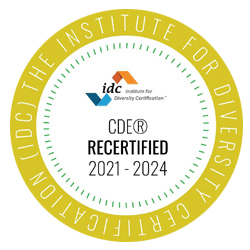The Recipe For Productive And Inclusive Team Talks
Imagine there’s been a disturbance on your team. Something was said or done that caused concern and there’s a need for constructive candor or a delicate topic of discussion must be introduced. It may be appropriate to have a team or even a company-wide talk about the issue to help align everyone or simply provide an outlet to process, gain clarity and support.
In this line of work (DEI), delicate conversations often occur and as such, it is necessary to be intentional about strategies and processes to most effectively manage those discussions for optimum outcomes.
Team talks are a powerful way to have conversations that make a difference. Team talks are designed to be organized, intentional convenings where most if not all of the team gathers to discuss a pressing issue or topic. Team talks seem intuitive. You meet, you talk, you leave with solutions. Problem solved, right? Not quite. A successful team talk is more complicated than that.
There is a recipe that can make your team talk a huge success. The formula I’m going to share with you will ensure everyone in the conversation understands the goals, process, and leaves the meeting with a positive outcome.
Skipping the essential steps of this team talk recipe may cause the meeting to get derailed, have folks leave feeling misunderstood, or risk ending the meeting without a plan for the future.
Set yourself and your team up for success. Here’s the recipe for productive, inclusive team talks.
Step 1: Set Community Agreements
Community agreements are like table manners. They are a set of rules and guidelines that everyone agrees to in order to help the gathering go smoothly. Many people skip this step when planning a team talk and it can cause some folks to feel left out, misunderstood, or silenced during the meeting.
When you’re creating community agreements, ask yourself and others in the room to reflect on these questions:
- How do I want to show up?
- How do I hope others will show up?
- How do we want to work together?
- What agreements do we need to make sure everyone can be heard, listened to, and participatory?
- What can help us get back on track if things go awry?
From there, a slew of ideas from participants may come up. Write them down and distill a few commonly-held community agreements from them.
Some of my favorite agreements are:
- Show respect
- Be engaged
- Maintain confidentiality
- Nothing is off the table
- Bring your authentic self
- Judgement-free zone
- Show gratitude
- Leave assumptions at the door
Once the community agreements are set, reiterate them to the team so everyone is aware of the rules and norms of the team talk.
Step 2: Set the Table with Goals and Roles
Now that your community agreements are in place, you can set the table. This is your time to lay out the goals and objectives for the conversation. Is the goal to solve the issue once and for all? Is it to learn from the mistake and make a plan to ensure it doesn’t happen again? Or is it to hold space for someone who was harmed and allow them to flesh out what occurred?
Helpful questions to ask aloud when creating goals for your team talk include:
- What will we be doing or discussing and why?
- Why are we meeting at this moment?
- What are we hoping to solve?
- What can we do to fix or remedy the issues in this conversation?
Whatever the goals may be, say them aloud. Ask others if there are other goals to consider during the team talk that will make this space meaningful and productive for everyone.
From there, you can set roles for the meeting. Who’s facilitating? Who’s managing the speaking rotation? Who’s the referee if the conversation gets messy or uncomfortable? Who is keeping time to make sure everyone on the team has a fair opportunity to share?
Defining roles allows the talk to go smoothly and holds folks accountable for ensuring the meeting is organized, efficient, and respectful.
Step 3: Take a Bite of Your Table Topics
It’s time to take a bite of the juicy topic(s) everyone came for. Begin with introductions. Perhaps allow the person whose idea it was to bring the topic to the table to speak first.
Why was this issue so important to bring up to the entire team? Why is it important to dig deep and work on a resolution? What will discussing this topic mean to the team’s inclusivity, diversity, and equity efforts? The facilitator should make space for multiple perspectives on this topic and encourage conversation that promotes understanding and empathy.
Be prepared for tangents to come up. The facilitator should artfully guide the conversation to support flow and efficiency. There’s a way to move conversations along without cutting anyone off or moving too quickly. As new topics arise, how can we include them, table them, or resolve them?
Some key questions the facilitator can ask to keep the conversation going include:
- What did you learn from this topic?
- What surprised you?
- What excites you? Confuses you? Scares you?
- What resonated with you?
Step 4: Have Dessert with Takeaways and Calls to Action
When topic(s) have been discussed, respectful conversation has been had, and people are seeing the light at the end of the tunnel, what takeaways can the facilitator encourage at the end?
In other words, what’s the dessert? What call-to-actions, commitments, or outros can bring closure to the conversation? Will an apology bring closure? Will a commitment to build a new task force to address issues like this in the future be helpful? Will affirming the bravery of the person(s) harmed by the issue be a good way of closing the conversation?
Some key questions the facilitator can ask to help close out the discussion include:
- What changes would you like to see?
- What resources do you need?
- What can we do to support you?
- How do you hope this issue will change in the future?
However you do it, make sure the closure feels good. People feel assured by action items and next steps especially after tough conversations. Leaving topics unresolved or without action plans can create an adverse effect. It can make the meeting seem unproductive and a waste of time. The talk should end with something that feels useful and productive for the participants. Ending on a high note with action steps and outcomes can encourage more participation at future team talks.
Step 5: Clean Up The Mess
The conversation went well, the topics were nourishing, and the dessert was satisfying. Now, it’s time to clean up. This is the final step in your table talk recipe and one of the most important. It allows the facilitator and the team to do one final sweep if the conversation got messy, emotional, or issues were left undone.
If things became messy, here are a few things the facilitator and participants can do:
- Appreciate and acknowledge people for sharing
- Refer back to the community agreements to ground the group
- Pause and allow space for silence or encourage a break
- Agree to follow-up about a topic, concern, or question after the session
- Share upcoming opportunities that can provide hope and optimism
- Create a positive feedback loop
After each session, whether you’re facilitating or not, be sure to thank everyone for sharing. It’s challenging to be vulnerable and openly discuss difficult topics. By offering words of affirmation to those who participated in courageous conversations, can help fuel productive team talks into the future. Expressing gratitude and thanking colleagues builds community, trust, and compassion.
Final thoughts
The recipe for team talks may seem like a big process but it’s an intentional strategy to build a stronger, more resilient team. Engaging in meaningful conversations, even on difficult topics, is an essential part of a thriving team ecosystem. The more intentional you can be in a team talk, the better it is for the company as a whole. Practice each of these steps in sequential order and be amazed at how much more productive, inclusive, and powerful your team dialogues become.

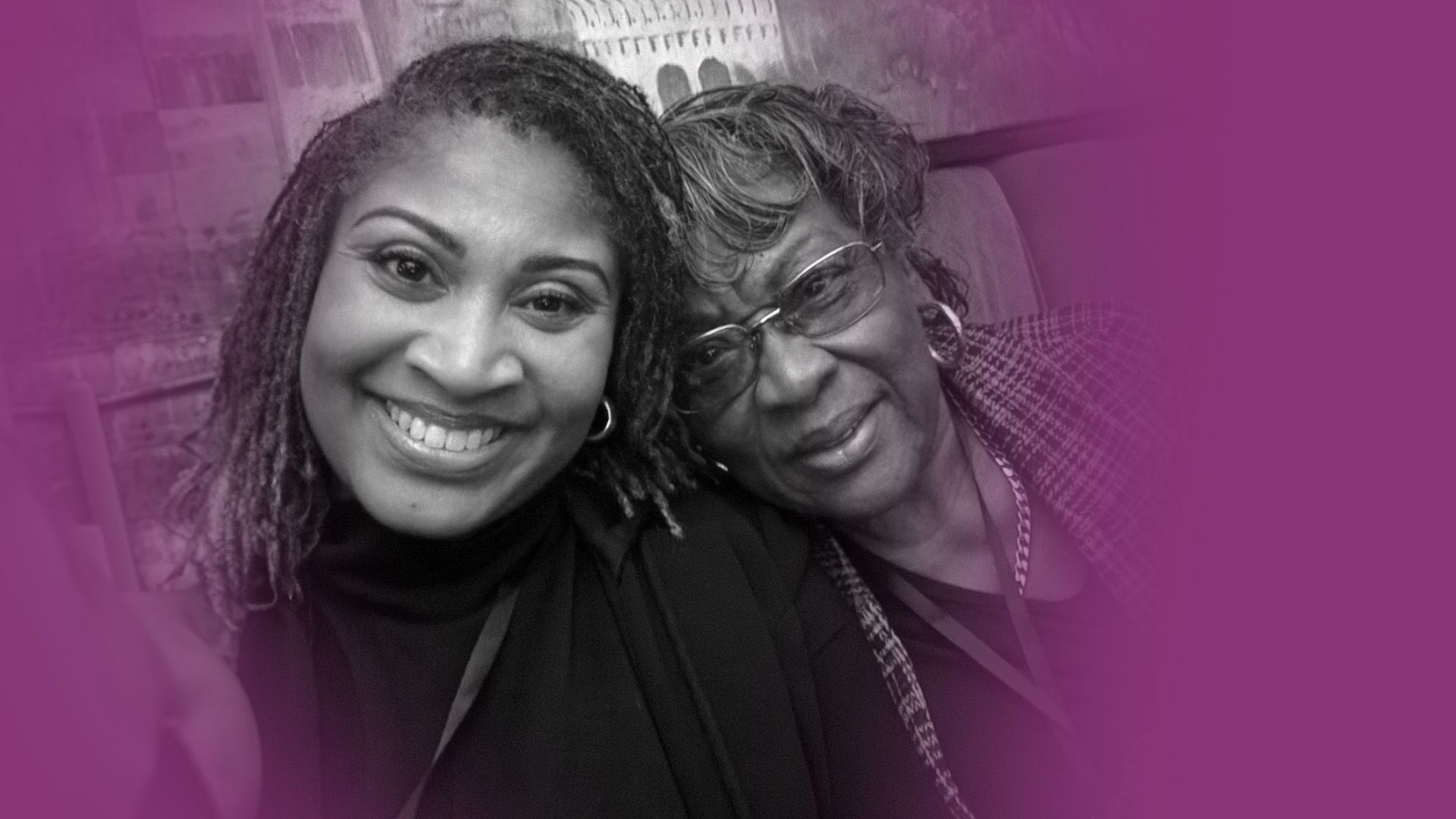








Keep up with NWC on Instagram:
-
Uncomplicate your DEI approach with my exclusive NEW LinkedIn Learning Course! Tailored to streamline your strategies, this course delves into the pivotal role of AI in driving successful DEI initiatives. By completing the program: You'll develop a profound understanding of how personal and organizational responsibility shapes DEI outcomes. Gain insights into recognizing the impact of your actions while acquiring invaluable skills for self-education and advocacy. Elevate your DEI journey today! Enroll now at the link in our bio. #NikaWhiteConsulting #DEI #LinkedInLearningCourseButton
-
NWC is dedicated to staying at the forefront of the dynamic DEI landscape. Click the link in bio to dive into some key insights from 2023 and the full list of predictions for 2024.� #DEI #ThoughtLeadership #NWCButton
-
The latest #IntentionalConversations episode featuring Abenaa Hayes is available. I’m eager to know your favorite segments, so please share them using #NikaWhiteConsulting! Find the episode by clicking the link in our bio. #DEI #vodcast #podcastButton
-
Thank you LinkedIn Talent Blog and writer, Dan Brodnitz, Global Head of Content Strategy, for featuring one of my newest LIL courses, "Navigating AI Through an Intersectional DEI Lens," in his article that recommends AI Learning Paths for Talent Leaders. Annnnnnnddddd, that’s not all! They have unlocked my course making it FREE until June 22. Excerpt: “We know one of your most pressing challenges is making sense of AI and using it to recruit and develop the talent your organization needs to be successful in the future. So, we’ve created AI learning paths for leaders in both talent acquisition and talent development and we’ve unlocked these courses, making them free until June 22, 2024.” Last, in case you’re curious about what the big deal is, the blog shared that “2024 Workplace Learning Report cites LinkedIn survey data showing that 4 out of 5 people want to learn more about how to use AI in their professional roles. But many leaders aren’t sure how to get started.” Run 🏃🏽♀️ don’t walk, and take my and these other LIL courses by clicking the link in my bio.Button
-
Honoring Judy Heumann Judy Heumann, an American disability rights activist whose tireless advocacy has transformed lives. Judy's leadership was instrumental in the passing of the Americans with Disabilities Act (ADA) in 1990, a landmark legislation that paved the way for greater inclusion and accessibility in society, including the workplace.� NWC honors Judy Heumann's legacy by continuing to advocate for disability rights and working towards a future where everyone, regardless of ability, has equal opportunities to thrive. #WomenInHistory #WomensHistoryMonth #DEIButton
-
Set a calendar reminder for #IntentionalConversations vodcast this FRIDAY at 11am EST. I’m thrilled to present an exclusive interview with the remarkable Tiffany Castagno. Tap the bio link to secure your spot today! #DEI #NikaWhiteConsulting #vodcast #PodcastButton
-
🌍✈️ Global Entry ✔️ TSA Precheck ✔️ Access to Airport Lounges ✔️ CLEAR Plus✔️ Traveling for business or pleasure got a whole lot smoother when I was able to check all the boxes above. Say goodbye to long security lines and stressful layovers, and hello to ultimate convenience and comfort. 🛫✨ With Global Entry and TSA Precheck, breeze through security checkpoints like a VIP, saving precious time for what truly matters – your journey. With Clear Plus, get to your gate faster with the escort of the ambassador. Plus, enjoy the added perks of expedited customs clearance when returning from international trips! 🌐🛂 But wait, there’s more! Elevate your pre-flight experience with access to exclusive airport lounges, where you can unwind in style, enjoy complimentary refreshments, and stay productive with high-speed Wi-Fi. 🍷💼 Whether you’re jetting off for a crucial business meeting or embarking on a well-deserved vacation, make every moment count with the convenience of these assets. Your stress-free travels await! Seriously, I sound like a commercial but this is not sponsored advertising. I’m just enjoying the convenience. Share in comments ways you like to travel stress-free. #TravelGoals #GlobalEntry #TSAprecheck #AirportLounges #TravelInStyleButton
-
Hope is my superpower!🦹🏽♀️ Earlier this week after presenting at Lockheed Martin in Moorestown, NJ, one of the attendees greeted me during my book signing and asked a question that I’ve been replaying in my head. This young Black engineer asked me if I think things will ever change (referring to the injustices, and inequities as he attempted to understand my passion for DEI). Without hesitation, I said, “My answer has to be yes, because if not, that means I’ve given up hope, and none of us can afford to lose hope.” He smiled and shook my hand. So today, in the spirit of hope, I am wearing the shirt I purchased from the Equal Justice Initiative Museum that says, “Injustice prevails when hopelessness persists. Hope is your superpower.” ~Bryan Stevenson #hope #superpowers #DEIButton
-
For years, Black women entrepreneurs didn’t have options. From the clothing we wore to business meetings to the makeup we put on for photoshoots, many of us longed for more inclusive and flattering options, culturally competent designs, and to see someone who looks like us running companies with purpose. We’ve made significant progress in the past few decades and many of us finally have access to Black woman-owned brands that truly “get” us and our aesthetic and values. In my latest Entrepreneur article, I highlight just four of the many Black woman-owned businesses breaking barriers and giving us options. Read about these Black women-owned brands in my article: (Article available via links page in bio). ✊🏽 Fitness Snob ✊🏽 DESERI ✊🏽 Vontelle ✊🏽 Kee’ss Moi I encourage you to support these businesses and hope you’ll keep your eye out for other Black women-owned brands near you. Shoutout your favorite Black-women owned brands in the comments. #BlackWomen #WHM #WHM2024 #WomenSupportingWomen @fitnesssnobsociety @deseriofficial @vontelleeyewear @keessmoiButton
-
Thank you to Abenaa Hayes for sharing valuable insights on today's #IntentionalConversations podcast! Didn't catch it live? Check out the recording on the NWC YouTube Channel. @abster0406 #DEI #NikaWhiteConsulting #vodcast #podcastButton
-
Acknowledge and celebrate diverse cultures, experiences, and backgrounds within your organization. Use DEI calendars to stay informed about cultural observances and milestones. Let's create a workplace where every voice is valued and included! #DEI #NikaWhiteConsultingButton
-
Come with me to the @greenvillechamber Annual Meeting! I have been involved with the Greenville Chamber for over a decade and have gained so much through the chamber’s leadership of the business community. I previously served as the VP, DEI with the Greenville Chamber which increased my visibility to community and business leaders. Throughout my tenure, I established the DEI Summit, Minority Business Accelerator, and created a CDO Roundtable among other initiatives and systems changes. The Greenville Chamber allowed me to fully lean into my DEI leadership contributions and passion, which I am grateful for. I am proud to be an investor of the Greenville Chamber. I am also Betting Big for Greenville. #yeahthatgreenville #greenvillesc #deisummit #togethergvl #LeadershipGreenville #BetBigForGreenvilleButton
-
The new #InclusionUncomplicated episode is out now! This week, Dr. Nika White reviews the three key elements of change that will make your DEI journey a success. Subscribed for weekly updates by clicking the link in our bio. #DEIButton
-
In times like now, where so many organizations are pulling back on DEI, it brings great joy to my heart to share the companies that are exemplifying tenacious leadership in the DEI realm. I’m grateful to reflect on the opportunity I had earlier this week to partner with Lockheed Martin, Moorestown, NJ facility as the featured speaker during their Global Diversity and Inclusion event. Chauncey McIntosh, VP, GM of the Integrated Warfare Systems and Sensors (IWSS) LOB for Lockheed was among those I was able to share the stage with along with Shireen Melvin, and Rich Lincoln. IWSS boasts over 9500 employees around the world. It was incredible to share with both a live and virtual audience about my book, Inclusion Uncomplicated, published by Forbes Book, and other relevant topics of workplace belonging. Thank you to the RMS Global Diversity and Inclusion team and the RMS Executive Inclusion Council for hosting this enlightening event. I had a grand time engaging with attendees, signing copies of my book, and enjoyed the more intimate conversations I was able to have with the Exec Council and Global D&I team. Special appreciation to Riley Folds for thinking of me and extending the invitation, and to Amanda Soderlund, for assistance with planning and logistics.Button
-
Join us tomorrow at 11am EST for the #IntentionalConversations vodcast, with guest Abenaa Hayes! Visit the link in our bio to register now! #DEI #NikaWhiteConsulting #Vodcast #PodcastButton
-
We cherish the incredible community we've nurtured over the years. What are some questions or topics you would like us to touch on in the future? Share your ideas with us in the comments below. Your insights drive us forward! #FeedbackWelcomeButton
-
March is Women’s History Month! It fills my heart with gratitude for the diverse ways women have shattered barriers with grit, determination, and courage. Here are some of the remarkable ways women have broken barriers: * Pioneering breakthroughs in STEM fields, challenging stereotypes and pushing the boundaries of innovation * Advocating for equal rights in politics, fighting tirelessly for representation and policy change * Redefining beauty standards in the arts, showcasing diverse talents and narratives that challenge societal norms * Leading with resilience in business, breaking through glass ceilings and paving the way for future generations of female leaders To all the women who have dared to dream, defied expectations, and persisted against all odds – thank you. Your courage has changed the world, and we’re honored to continue your legacy! Tag a woman you admire. #whm #whm2024 #womensupportwomenButton
-
Encourage open dialogue about DEI topics, creating a safe environment for sharing experiences and perspectives. NWC program Unravel The Knot (UTK) can help you and your team build a workplace DEI program that encourages open dialogue. This unique day and a half program allows participants to learn how to activate and ignite a passion for the journey toward uncomplicating DEI and communicating its value. Visit the link in our bio to register now!Button
-
I have gifted my friend, Minda Harts’ book, More than Magic, numerous times including to young girls in the Carlo and Nika White Foundation’s Leaders in Training (LIT) program and young cousins in my family. Of all my gifting experiences related to this book, there’s one that’s most memorable, which is when I gave a copy to my little cousin (middle school) for Christmas. I casually mentioned to her that if she reads it and share what she learned with me she would be rewarded for her efforts. I think it’s important to instill investing in one’s own personal learning and development. This has been a practice my husband started with our kids that has carried over to other young people in our lives we take interest in. A couple months passed, and out of the blue, I received a text from my cousin, saying, she’d read the book and wanted to share her report. 🥳 Excitedly, I responded with a welcome invitation for her to email me her report (she had typed it up 🥹), and she sent it to me within a matter of minutes. I read her reflections, including what she learned, how the book impacted her, and a summary clearly indicating she had read the book. I was I overwhelmingly proud of her for the initiative, accountability, and maturity displayed. That day my sweet, brilliant cousin earned herself a $100 reward, but more importantly she earned a big cousin that has a deepened appreciation for her potential, ability and undeniable “magic”waiting anxiously to continue to support her in every endeavor. Drop a 👊🏽 in the comments to show my cousin some love.Button
-
Recent travels took me to NYC to facilitate an Immersive Inclusive Leadership Lab for @fahertybrand Brand managers and directors. These amazing people leaders came hungry, curious, and open to a full day experience of discovery through critical reflection, micro learning activities, and tools to equip them to lead inclusively. On day two, I led a Truth Talk with one of the Faherty founders, for all staff, on the topic of “Navigating Difficult and Inclusive Conversations.” Faherty definitely ranks among my favorite clients. 💜 Special shoutout to Takia Cushnie for her visionary leadership driving Faherty’s DEI efforts. I love when clients become friends.Button
-
Early morning flight out of Philadelphia International Airport and walked into a bookstore and spotted Elaine Lin Hering’s book, Unlearning Silence, which was on my list of books to order. Congratulations, @elainelinhering! Can’t wait to dig in. #women #womenauthors #unlearningsilenceButton
-
Watch the newest installment of the #IntentionalConversations podcast featuring an engaging conversation with @janiceomadeke. We'd love to hear your favorite moments, so tag us with #NikaWhiteConsulting. Access this engaging discussion by clicking the link in our bio. #DEI #Vodcast #PodcastButton
-
Tune in live this FRIDAY at 11am EST for a captivating session of #IntentionalConversations! We're thrilled to host Abenaa Hayes. Secure your spot by tapping the link in our bio. #DEI #NikaWhiteConsulting #vodcast #podcastButton
-
Discover the insightful work of Sara Ahmed, a scholar renowned for her contributions to feminist and queer theory. Through her insightful exploration of diversity and institutional racism, Ahmed's concept of "institutional whiteness" uncovers the deep-rooted presence of white supremacy within organizations and institutions. NWC commends Sara Ahmed for her impactful contributions to illuminating systemic inequalities and advocating for meaningful change. Together, let's continue striving towards a future where inclusivity and equity are fundamental principles in every facet of society. #WomenInHistory #WomensHistoryMonth #DEIButton
-
My course made the LinkedIn Learning homepage! Accountability for Leaders: Navigating Diversity, Equity and Inclusion is one of my newest courses recently released and I invite YOU to check it out. (Link in bio or DM me to have it delivered to you directly). Here’s an overview: Get ready for DEI success with this practical, straightforward course from DEI expert, Dr. Nika White. Find out how to drive meaningful change in DEI initiatives. Learn about the consequences of a lack of accountability in DEI efforts and the benefits of holding leaders accountable for DEI outcomes. Explore ways to build an accountability framework for DEI and learn the key components of an effective DEI accountability. Go over how to tailor accountability frameworks to organizational goals, as well as strategies for setting and tracking measurable DEI goals. Plus, discover how you can use data to assess outcomes and drive improvement. #linkedin #linkedinlearning #linkedinlearninginstructor #diversity #equity #inclusionButton
-
Today we celebrate World Sleep Day, highlighting the importance of good sleep for our overall health and well-being. Remember, quality sleep is essential for our physical and mental rejuvenation. Let’s prioritize restful nights and energized days! P.S. For me, the best sleep is after an amazing spa service. #WorldSleepDay #HealthySleep #WellBeingButton
-
Sending a massive, Thank You, to @janiceomadeke for her invaluable contribution to this morning's #IntentionalConversations podcast! Couldn't catch it live? The new session is available for viewing on the NWC YouTube Channel and website. #DEI #NikaWhiteConsulting #vodcast #podcastButton
-
NEW Courses- just released!! Unlock the best practices of DEI success by registering today for "Accountability for Leaders: Navigating Diversity, Equity, and Inclusion" and "Navigating AI Through an Intersectional DEI Lens". Start your DEI journey - enroll in the course through the link in our bio.Button
-
During my recent travels with my sister, I received a wonderful surprise!! I found my book, Inclusion Uncomplicated: A Transformative Guide to Simplify DEI, published by Forbes Books, at the Hudson bookstore in the Atlanta airport. While I say that Diversity, Equity, and Inclusion work found me, I also made a conscious effort to align myself with work that helps others and was closely related to my values. I am proud that I can spread the message of #DEI and ensure all individuals can access and benefit from a diverse and equitable workplace and society. My book can transform company cultures by making DEI simple and uncomplicated. Pick up Inclusion Uncomplicated at your favorite local bookstore or click the link in the bio. #NikaWhiteConsulting #InclusionUncomplicated @forbesbooksfamily @hudsonbooks @atlairportButton
-
Check out a clip from the latest #InclusionUncomplicated video “Inclusion Is All About Action”. It's essential viewing for those aiming to understand DEI better. Subscribe to never miss a new video or tip on the NWC YouTube channel! #NikaWhiteConsulting #DEIButton
-
Workplace Myths About Women It’s WHM and here are some workplace myths about women that need to be debunked: 1. **Women are less ambitious than men**: Many people assume that women are less ambitious or career-driven than men, which is simply not true. Ambition knows no gender. 2. **Women are more emotional and less rational than men**: This myth perpetuates the stereotype that women are overly emotional and thus not suited for leadership roles. In reality, emotional intelligence is a valuable asset in any workplace. 3. **Women are not as good at math or science as men**: This stereotype has been debunked time and time again, yet it still persists in many workplaces. Women are just as capable as men in STEM fields. 4. **Women are more likely to gossip or create drama in the workplace**: This myth unfairly paints women as overly dramatic or gossipy, when in fact workplace drama can come from any gender. 5. **Women are less confident than men**: Studies have shown that women are just as confident as men but may be less likely to boast about their accomplishments. Confidence is not exclusive to one gender. 6. **Women are better suited for support roles rather than leadership positions**: This myth undermines women’s leadership potential and contributes to the lack of gender diversity in leadership positions. 7. **Women should prioritize family over career**: This myth assumes that women must choose between having a successful career and a family, reinforcing outdated gender roles. 8. **Women are not as competitive as men**: The idea that women are not competitive may lead to women being overlooked for opportunities that are based on competition or performance metrics. It is crucial to challenge and dispel these workplace myths to create more inclusive and equitable environments for all employees. Share in the comments what you would add to this list. #womenhistorymonth #equity #inclusionButton
-
Running it back to this past Saturday where we celebrated my BFF, @lawannadendy turning the big 50! May the year bring you amazing surprises and the bomb hair days, and flawless skin care, and a snatched stomach and hips even after cheat meals.Button
-
Celebrating my sister’s birthday in the DR. Homemade Dominican cake made by @amysifren!Button
-
Register now for tomorrow’s #IntentionalConversations with very special guest co-host, @janiceomadeke. We’ll see you tomorrow at 11am EST. Secure your spot by clicking the link in our bio to register. #DEI #NikaWhiteConsulting #vodcast #podcastButton
-
We’re excited to share with you our new thought leadership paper on 2024 DEI Trends. At NWC, we're committed to staying ahead of the curve in the ever-evolving DEI landscape. Click the link in our bio to dive into some key insights from 2023 and the full list of predictions for 2024. #DEI #NikaWhiteConsultingButton
-
Did you know Nika White Consulting has its very own YouTube channel? We offer cutting-edge insights on DEI and leadership that can truly make a difference. Every week, we feature new content: * Intentional Conversations Vodcast: Engaging discussions with leading experts on the nexus of DEI, leadership, and business. * Inclusion Uncomplicated: DEI made easy with actionable advice and strategies. � Subscribe to get your weekly inspiration fix and join a community committed to fostering positive change and inclusive growth! Link in bio. #YouTube #Inclusion #Empowerment #DEI #Leadership #NikaWhiteConsulting #Vodcast #PodcastButton
-
The newest NWC #IntentionalConversations podcast episode featuring Kelly George (@real_resilience_ ) is available to listen and download! Tune in on your preferred platform and let us know your impressions with #NikaWhiteConsulting. Find the episode by tapping the link in our bio. #DEI #vodcast #podcastButton
-
The recognition of being the first group of women to petition the U.S. Congress is often attributed to those involved in the abolitionist movement, who advocated for the end of slavery and the slave trade. Their collective action marked a pivotal moment in American history, showcasing women's early involvement in political activism and their fight for justice. NWC honors these brave women who fought for what was right. #WomenInHistory #WomensHistoryMonth #DEIButton
-
Mark your calendars for an engaging live #IntentionalConversations podcast happening this FRIDAY at 11am EST, showcasing an interview you won't want to miss with Janice Omadeke! Join an engaging conversation by clicking the link in our bio. #DEI #NikaWhiteConsulting #vodcast #podcast @janiceomadekeButton
-
A big thank you to Kelly George for joining us on the #IntentionalConversations podcast! In case you couldn't tune in, the recording is available on the NWC YouTube Channel. Don't miss out on this insightful discussion! @real_resilience_ #DEI #NikaWhiteConsulting #vodcast #podcastButton
-
Excited to say my "What's the DEIL?" episode has just gone live! Hosts Natalie and Shanté dive deep into the world of intentional #inclusion. We explore the significance of intentional inclusionism and its impact on workplaces and communities. You can find it on YouTube, Spotify and Apple Podcasts. Drop your comments below and share your thoughts on intentional inclusionism. What steps are you taking to foster #intentionalinclusion in your life? #podcast #vodcast #DEIButton
-
Take a look at the "Messaging Matters, but Actions Matter More" #InclusionUncomplicated video clip. DEI can appear daunting, but NWC is here to make it straightforward with actionable advice. Visit the NWC YouTube channel for insights on how to ensure your company is "walking the talk". #NikaWhiteConsulting #DEIButton
-
Don't miss out! Tomorrow at 11am EST, we're hosting a special live #IntentionalConversations session with Kelly George. @real_resilience_ Register via the link in our bio. An inspiring experience awaits! #DEI #NikaWhiteConsulting #vodcast #podcastButton
-
Have you joined the NWC email list? Subscribing to our emails means you'll get privileged access to our weekly #IntentionalConversations vodcast, the newest updates on NWC's initiatives, and the freshest insights in DEI directly in your inbox. Keep in the loop - join our lively community by signing up through the link in our bio. #NikaWhiteConsulting #DEIButton
-
I am proud to be featured as one of the 2024 CORE 100 Women of Impact and Influence! This year's CORE 100 Honorees exemplify the pinnacle of Black Excellence, radiating beauty, resilience, and intelligence. Thank you CORE for the honor!Button
-
Having trouble with DEI resistance at your organization? Have you read my book, ‘Inclusion Uncomplicated: A Transformative Guide to Simplify DEI’? In the appendix, I’ve included descriptions of personas you may encounter during your DEI journey, chapter summaries, and more! It is easy to copy and print these resources to display around your workplace as an uncomplicated DEI best practices reminder. Purchase your copy of ‘Inclusion Uncomplicated: A Transformative Guide to Simplify DEI’ at the link in our bio. #DEI #NikaWhiteConsulting #bookrecommendationsButton
-
Despite the cost of training for employees, the return on investment is immense if it is consistent. The NWC program, Unravel The Knot (UTK) can help you and your team build a workplace DEI program that everyone benefits from. This unique day-and-a-half program allows participants to learn how to activate and ignite a passion for the journey toward uncomplicating DEI and communicating its value. And when your team grows, so do you! Visit the link in our bio to learn more. #DEI #NikaWhiteConsultingButton
-
The newest episode of our #IntentionalConversations podcast is out! Dive into an insightful conversation with Kamini Wood. Let us know your highlights by tagging #NikaWhiteConsulting. Unlock this insightful episode today by clicking the link in our bio. @itsauthenticme #DEI #vodcast #podcastButton
-
That time last month on Valentine’s Day when my lil gym buddy, RJ, brought me a special treat and I melted. RJ and I have a special relationship (although he never remembers my name and refers to me as “That Lady”). His mom and I train at the same gym and I’ve always admired how she brings him with her rather than sacrificing her fitness routine. In beginning, RJ was not a fan of me and would cover his face when he saw me coming toward him or when I would speak to him. I told him I would make him my friend over time. I needed a plan and treats always bring the kids around helping them to warm up to you. So, I started bringing RJ special snacks and in no time he started smiling at me, speaking to me and even giving me hugs. My message, kindness can go a long way and never underestimate it. My next RJ project is to work on him knowing my name. 🤣☺️Button
-
Mark your calendars and register NOW!! April 3rd I will keynote at the Ascension Leadership Conference! 🎙️ I will discuss "Creating Your Story," guiding participants to unlock their full potential and craft their own narrative of success. 🚀 Register now via the link in my bio and join us for a day of empowerment and transformation. #AscensionLeadership #KeynoteSpeaker #CreateYourStoryButton
-
Another airport sighting of my book, Inclusion Uncomplicated: A Transformative Guide to Simplify DEI published by Forbes Books, and this time at the Chicago O’Hare International Airport. Thank you, Princess Cullum, for capturing and sharing in my excitement of having book #3 available to the world. My heart 💜 leaps every time one of these pictures is shared with me. I’m literally pinching 🤏🏽 myself. #simplifydei #nikawhitespeaks #intentionalinclusionist #diversityequityinclusion #belonging #inclusionuncomplicated #forbesbooksauthor #amazonbestsellerButton
-
Tribute post to Darryl George. Dear Beautiful Black Young King, I tribute this post to you and all others who dare to wear their hair as an expression of culture and self. I swoon over your luscious locs. They’re like tiny braided wonders, dancing to their own beat. From the subtle sways to the majestic cascades, there’s something undeniably magical about their elegance. I admire the intricate patterns, the way they effortlessly frame your face, and how they can make you feel like the true king you are. There’s a unique charm in the way they bring out confidence and draw you closer to the ancestors. Not only do your locs make a style statement, but they also amplify versatility, culture, and pride They’re apart of your ever-evolving crown that can shape and mold to match any occasion. Each twist holds a story, and each strand is a testament to self-expression. Cheers to embracing the beauty that lies within and rocking locs with passion! 🌟💖 I’m sorry society hasn’t amplified the natural beauty your locs hold. Know that many of us see you, stand with you, support you, think you are worthy and appreciate your bravery and voice. P.S. Black hair is professional and belongs in every space and place.Button
-
Spotlight on Kimberlé Crenshaw. In 1989, Kimberlé Crenshaw introduced a groundbreaking concept: #Intersectionality. This framework helps us understand how our identities—such as race, gender, class, and more—interact to shape unique experiences of discrimination and privilege. Crenshaw's work reminds us that the fight for justice is multifaceted and inclusive of all our identities. NWC incorporates the concept of intersectionality in all of our work to create a more equitable and inclusive world. Let's celebrate and learn from Kimberlé Crenshaw. #WomenInHistory #WomensHistoryMonth #DEIButton
-
Catch our live #IntentionalConversations this FRIDAY at 11am EST for another great conversation! We're delighted to welcome special guest Kelly George, who will discuss what it feels like to be a newly published author, well-being and leadership coaching. Tap the link in our bio to join us Friday. @real_resilience_ #DEI #NikaWhiteConsulting #vodcast #podcastButton
-
The first day of The Faith & Politics Institute’s Congressional Civil Rights Pilgrimage has commenced, uniting a varied group of leaders, which includes Members of Congress, business figures, prominent individuals, and scholars. This weekend, we are in Alabama to engage deeply in the rich history of the Civil Rights Movement. Throughout the pilgrimage, participants will partake in an enlightening tour of historic sites, informative sessions, and tributes, with distinguished speakers shining a light on our country’s past and the bravery of those who advocated for a fairer and more equitable future. Stay tuned in the upcoming days as I share standout moments and reflections from this significant journey. I aim to capture its importance in influencing present-day conversations and fortifying our democracy. I can’t tell you what an honor it is to be on this trip. #civilrightspilgrimage #democracy #civiccourage #LeadershipLegacy @faithandpoliticsButton
-
We had another great #IntentionalConversations session! Thank you to Kamini Wood for sharing your knowledge with our growing community. You can watch the broadcast by visiting the NWC YouTube Channel. #DEI #NikaWhiteConsulting #vodcast #podcast @itsauthenticmeButton
-
So many great impressionable insights from Friday’s #IntentionalConversations #Vodcast that featured Julia Blandin Wiener, Ph.D. Here are a few of my favorite takeaways: ✔️ When we don’t own our story, we forget we have power in our stories. Owning your story empowers you, but it doesn’t define you. ✔️ Black people have grit. There’s magic in our experiences of having to navigate unfair circumstances and we should use that to our advantage. 6 ways leaders create culture: 👉🏽 What they pay attention to. 👉🏽 How they respond to critical events and organizational crisis situations. 👉🏽 How and what they allocate resources to. 👉🏽 How they reward and determine status. 👉🏽How they recruit, select, promote, and fire. 👉🏽 How they deliberate and role model. ✔️ It’s not just what you do, it’s what you DON’T do as well. ✔️ If you don’t have time for DEI, you don’t have time for a successful company. ✔️ When a leader ask for feedback, that’s the time to be quiet and ask “Tell me more about that,” not the time to defend. ✔️ There is strength in vulnerability. There is strength in being who you are. Whatever it is that you’ve been through, talk about it…you never know who will want to connect with you because of that. You can catch the full replay via link in bio. You can also register for FREE for upcoming weekly #intentionalconversations Vodcast via the link in bio or catch us LIVE on #LinkedIn every Friday 11 am EST. @jw.strategiesButton
-
Thank you to all of our February #intentionalconversations guests! I’m so thankful to have so much unique perspectives join the NWC #vodcast. Join us next Friday at 11am est for more #DEI topics! @mareishareese @footprints_in_africa @jw.strategies @amirabargerButton
-
Dive into this week's #InclusionUncomplicated video! DEI might seem complex, but with practical tips, we can simplify it. Learn more about transitioning power and join NWC in making DEI more approachable. Check out our full library on YouTube and subscribe for weekly updates! #NikaWhiteConsulting #DEIButton
-
I’m so thankful for the opportunity to film two new LinkedIn Learning Courses, released this week. I had a blast creating each course and can't wait for you all to view this important #DEI information. Enroll in my course by clicking the link in our bio.Button
-
We're going live TOMORROW at 11am EST with #IntentionalConversations and a special guest, Kamini Wood @itsauthenticme, for an interview that's sure to inspire. Join us by following the link in our bio to register. #DEI #NikaWhiteConsulting #vodcast #podcastButton
-
Family Board Meeting Chronicles In a recent family board meeting, we revisited our family values. ✝️Christ-centered and Christ-led 💰Wealth Building 🎖️Impactful Service ⚛️Unity 📝 Legacy I highlighted what Christ-centered/Christ-led and what wealth building means to us in previous posts. Today, I’m sharing our impactful service value. Impactful service emphasizes the importance of contributing positively to the well-being of others and the community. This family value encourages members to actively seek opportunities to serve and make a meaningful difference in the lives of those less fortunate, intentionally impacting the Black community. It involves acts of kindness, generosity, and a commitment to social responsibility. We are a family that believes, to whom much is given, much is required. For this reason, we invest time and resources for missions. We lend our time and talents to causes we care about. We are better for it. Share in the comments a value your family is aligned on. #familytraditions #familyvalues #blackfamilyButton
-
It’s an election year, OF COURSE it’s important to refine and clearly communicate your company’s code of conduct. At NWC, we’ve been supporting our clients in proactively setting the tone with clear civility expectations during this high-stakes election year. Our approach includes refining the code of conduct, revisiting policies, and upskilling employees on navigating difficult conversations. Some are retail clients where the concern is not just about the employees’ behavior, but customers’ behavior as well which also has to be managed and planned for. Implementing a refined code of conduct must entail a rollout of a strategic communications strategy to socialize the updates. I invite you to take a look at the draft code of conduct below and hope it provides inspiration for your organization. 📢 “We celebrate authenticity. We accept personal responsibility for our behaviors. We conduct ourselves with honesty. We act with empathy and compassion. We do not tolerate the mistreatment or exclusion of others based on race, age, gender, sexual orientation or any other identity-related characteristics. We communicate with clarity. We operate with integrity. We lead by example. We work tirelessly to identify new and innovative ways to improve the employee experience. We choose to be respectful toward ourselves and each other. We are vigilant about our safety and the safety of others. We are committed to this code of conduct and making sure all who enter our spaces feel safe, welcomed and are treated with kindness and respect.” 🔚 P.S. Hire NWC, and we can help you curate a customized approach. P.S.S. Remember, it’s essential to get ahead of it and be proactive. #codeofconduct #civility #workplaceculture #companyvalues #election2024Button
-
💡Leadership commitment matters in DEI! 💡Leaders set the tone, shape culture, and allocate resources. 💡When they prioritize #Diversity, #Equity, and #Inclusion, it inspires a workplace where everyone thrives. 🗣️How are your leaders committing to DEI? Share in the comments. #DEIButton
-
Mark your calendars!! On March 22nd from 12:30-1:30m est join us for a panel and Q&A discussion on GenZ #Ethics and #Values. We will consider paradigm shifts that our recent generation has shifted. Take advantage of this opportunity by registering using the link in our bio.Button
-
Are you part of our NWC email community yet? Don't miss out! Joining our email list gives you exclusive access to our engaging #IntentionalConversations vodcast every week, updates on NWC's latest activities, and the latest trends in #DEI. Stay connected - sign up via the link in our bio to join our vibrant community. #NikaWhiteConsulting #DEIButton
-
What happens at the intersection of DEI and AI? How can AI be harnessed for social justice? In the NEWEST LinkedIn Learning course, I will show you how to navigate the complexities of AI by adopting an intersectional DEI lens. Through exploring historical examples of bias in AI and how multiple forms of bias can intersect with AI, you will learn: 💡 Core concepts, ethics and values of AI development 💡 Best practices for integrating DEI into everyday AI workflows 💡 How to minimize bias in AI systems & outcomes 💡 Practical skills you need to develop and start modeling the future of AI and DEI across all facets of your organization I am beyond excited this very timely and relevant LinkedIn Learning course is now available to YOU. Click the link in our bio for more.Button
-
Despite the challenges, Black women-owned businesses are bringing their products and services to the market; setting the stage for Black women everywhere to feel well, look good, and stay rooted in the culture. If you know me, you know I love supporting Black businesses and brands. With the beauty and #makeup industry dominated by white male-owned businesses, Kee’ss Moi is breaking barriers with their #crueltyfree and #vegan lip glosses inspired by iconic landmarks and neighborhoods. Founded by Mouna Deme, a French visionary with Senegalese roots, they’re celebrating #diversity and #inclusivity in beauty with products that match darker skin tones and make us look chic. With every hue telling a story and echoing the essence of its origin, Kee'ssMoi is more than a cosmetic line—they’re giving women like me #empowerment and #selfexpression with Black woman-owned beauty that works for us, not the other way around.Button
-
Our recent #IntentionalConversations episode with Dr. Julia Wiener @jw.strategies is now live on all major podcast platforms. We'd love to hear which parts resonated with you, so tag #NikaWhiteConsulting and let us know! Access the episode now by following the link in our bio. #DEI #vodcast #podcastButton
-
#CriticalRaceTheory (CRT) emerged in the late 1970s when legal scholars, including Derrick Bell, Kimberlé Crenshaw, and others, began to develop a framework that would examine the structural and systemic aspects of #racism. It's important to note that #CRT is a collaborative and evolving field, and many scholars have contributed to its development over time. It intersects with #DEI by helping us understand the roots of #inequality and the importance of inclusive solutions. Understanding CRT allows us to question dominant narratives, challenge discriminatory practices, and work toward greater social justice. It's a lens through which we can recognize and address the complexities of racial disparities.Button
-
An impressive 50,000+ #Black women are innovating in the United States–but not without the uphill battle of fighting bank funding denials, limited access to capital, and systemic #racism and #sexism. If you know me, you know I love supporting Black businesses and brands. With tons of fashion brands emerging from Europe, @deseriofficial is a Black woman-owned fashion brand crafting signature handbags and jewelry that are timeless, elegant, and undeniably of the moment. Each handbag is handmade and a true work of art that reflects the skill of the artesian and the eye of the designer. With a deep appreciation for and commitment to quality, Deseri Kelley created a brand that is the embodiment of luxury made accessible. #RepresentationMatters. Deseri took a leap and launched a fashion brand that women #entrepreneurs like myself can use and feel elevated in. There are a million handbag brands out there, but very few are Black woman-owned and able to meet the mass market where they are.Button
-
Family Board Meeting Chronicles In a recent family board meeting, we revisited our family values. ✝️Christ-centered and Christ-led 💰Wealth Building 🎖️Impactful Service ⚛️Unity 📝 Legacy I highlighted what Christ-centered and Christ-led - means to us in a previous post (check feed). Today, I’m sharing our wealth-building value with you. Wealth building as a family value involves the intentional and responsible accumulation of financial resources over time. This value encourages disciplined saving, investing, and strategic financial planning to ensure long-term financial security and the ability to support both immediate and future family needs and address the needs of those less fortunate. My kids can tell you their networth, all about their budget and saving habits, as well share about the multiple investment opportunities they have participated in since they were little kids to include a lemonade business, and real estate ventures with their dad. We are so fortunate as a family to have my hubby, Carlo White leading us with his “wealth” of knowledge in the area of money. Wealth building starts with a mindset and he’s seeded this value well into each of us. Share in the comments a value your family is aligned on. #familytraditions #familyvalues #blackfamilyButton
-
Don't Miss Out this FRIDAY at 11am EST! We're excited to bring you another captivating episode of #IntentionalConversations! Join us for an exclusive and insightful interview session with the incredible Kamini Woods. Register using the link in our bio! #DEI #NikaWhiteConsulting #vodcast #podcastButton
-
Seen a photo on a resume lately? I had a client recently seek guidance on a growing trend of resumes being submitted with a picture of the candidate. While some people want to add a professional photo to their resume to appear personable, the standard practice is to exclude this element. There are several benefits to not adding a photo to your resume, such as keeping your resume concise and minimizing bias. For organizations looking for language to help discourage receiving resumes with pictures , I I recommend a statement along these lines for your recruiting website, job postings, etc.: “At XYZ we are committed to fostering a diverse, equitable, and inclusive workplace. To ensure a fair and unbiased recruitment process, we kindly request that candidates refrain from including photographs on their resumes. Our focus is solely on evaluating qualifications, skills, and experiences that are relevant to the position. This practice helps us uphold our commitment to diversity, eliminate potential biases, and provide an equal opportunity for all applicants. Thank you for your understanding and cooperation in creating a more inclusive hiring process.” Some may still submit their materials with a picture included, and the organization will need to decide how to consistently handle that internally. I wouldn’t disqualify the candidates, but I would consider what steps need to be taken with your internal systems to ensure that before the resume goes to a hiring manager, or interview panel, the picture is removed. I know that some companies have gone back to the candidate to request that they remove their picture before advancing in the process, stating the reason why. Share in the comments other considerations and implications of this seemingly growing trend. P.S. Unless you are looking to hire a model or an actor/actress do NOT request a picture be submitted with a resume or application. Would you include your photo on a resume?Button
-
Diverse representation in the medical profession is necessary to address healthcare disparities and promote equity in Black communities. Through their presence, Black medical professionals serve as catalysts for change, advocating for improved healthcare policies, fostering trust, providing culturally sensitive care, and ultimately contributing to better health outcomes. Healthcare institutions and policymakers must make concerted efforts to recruit, retain, and support Black medical professionals, ensuring they play a central role in shaping a more inclusive and equitable healthcare system for all. My latest article delves into this topic to include six critical benefits to increasing the representation of Black medical professionals. Learn about these benefits via link in bio. Share in the comments any other benefits that come to mind from your perspective and shout out any Black medical professionals in your network.Button
-
February 2023 was a big month for me as I had just released to the world my book 📖 baby, Inclusion Uncomplicated, hosted virtual and in-person book release events, and scheduled countless book talks and tour stops. I love 💜 her more today than the day she was introduced to the world. Having book promoted in Times Square is a tremendous achievement for any #author. It represents recognition, validation, and a significant milestone in one’s writing journey. The bright lights and bustling crowds create an atmosphere that buzzes with excitement and possibility. Seeing your book displayed prominently among the iconic billboards and the heart of a vibrant city is a dream come true, instilling a sense of pride and accomplishment. It not only exposes your work to a vast audience but also symbolizes the value and significance of your creative expression. The experience is a testament to the hard work, dedication, and talent invested in crafting a story worth sharing. Emotions like joy, gratitude, and a profound sense of fulfillment are natural reactions when you witness your book promoted in such an iconic and influential location. It serves as a reminder that your words have the power to captivate, inspire, and connect with others in meaningful ways. Located in the heart of Times Square, directly across from Father Duffy Square, this digital board attracts the attention of 300,000 busy pedestrians and shoppers daily. Featuring over 15,000 square feet of LED signs on a four-level building, this board adorned with my name, face, and #1 🥇 Amazon Best Seller book, #InclusionUncomplicated, lit up the streets for 1️⃣ minute each hour for7️⃣ days from May 28th to June 4th, 2023. My book publisher, Forbes Books made that happen for me! I am so #GRATEFUL. 🙏🏾🙌🏾Button
-
We had a wonderful #IntentionalConversations session with Dr. Julia Wiener @jw.strategies yesterday morning! If you didn't catch it live, no problem - Access the episode now on YouTube by following the link in our bio. #DEI #NikaWhiteConsulting #vodcast #podcastButton
-
According to J.P. Morgan, Black women are the fastest-growing group of entrepreneurs and there’s no end in sight. If you know me, you know I love supporting Black businesses and brands. @ Vontélle is a luxury bespoke eyewear brand with an ethnic flair using unique African, Caribbean, and Latin print designs and textiles created by women of color. The luxury eyewear market is dominated by European brands, so it’s been refreshing to don a pair of Vontélle eyewear that are handcrafted and made for diverse faces. Their eyewear includes wider bridges for the nose, longer temples so there’s no pain behind the ears, and larger lenses for high cheekbones so every pair fits comfortably on the face. Even better, Vontélle is the first Black women-owned and operated eyewear company to obtain a licensing agreement from Nickelodeon. This brand is changing the narrative of who stylish eyewear is made for and putting Black and brown people’s unique physical characteristics and culture front and center in their designs. #blackbrands #blackhistorymonth #womanownedbrands #DEI #NikaWhiteConsultingButton
-
“How do we now incorporate tools and best practices that hold people accountable? How do we take our learning experiences and then actualize that learning into the day-to-day?” Learn to develop a plan that answers these questions and more. This book is a must-read for anyone looking to make a real impact in fostering inclusive environments. Click the link in our bio, to check out a review from Dr. Jonathan Ashong-Lamptey and grab your copy today! #DEIReads #NikaWhiteConsultingButton
-
For every Black woman who starts a business, a barrier is broken! If you know me, you know I love supporting Black businesses and brands. Fitness Snob is a Black and women-owned crew sock brand helping to cultivate and empower every woman’s fitness lifestyle. While crew socks don’t seem like a barrier-breaking product, they really are. With the apparel industry being largely dominated by white male-owned businesses, Black woman-owned fashion–especially crew socks which are prized by athletes in every corner of our country–are hard to come by. As someone who’s on my own fitness journey, it’s been empowering for me to wear attire that makes my workouts more comfortable and efficient…all while knowing a Black woman is behind the brand that I’m supporting. #blackbrands #blackhistorymonth #womanownedbrands #DEI #NikaWhiteConsultingButton
-
Discover Our Latest #InclusionUncomplicated Episode! This week, gain a fresh perspective on what DEI means to LGBTQ Employees as we simplify DEI, making it more approachable. Explore our video series and subscribe for weekly insights by following the link in our bio.Button
-
Join us tomorrow at 11am EST for the #IntentionalConversations vodcast, where we are welcoming Dr. Julia Wiener @jw.strategies to discuss how Black individuals can harness their experiences and resilience as a source of strength, and the responsibility to uplift. Visit the link in our bio to register now! #DEI #NikaWhiteConsulting #Vodcast #PodcastButton
-
Thrilled to announce my new article on Entrepreneur.com! Delving into the burden of being the "first," it offers crucial strategies and insights for growth and development. Discover the full article via the link in our bio. Your thoughts and discussions are welcome! #BusinessGrowth #EntrepreneurshipButton
-
True grit on display. I’ve never seen so much grit than watching my smart, determined two-year old cousin try to convince my hubby to peel him an orange his Gigi told him he couldn’t have. Lil fellow was relentless in his negotiations. Grit. Defined as “the drive, stamina and fortitude to push through any obstacle until success is achieved.” Grit isn’t just about perseverance; it’s about summoning the courage to pursue the dreams that reside in the deepest corners of your heart, no matter what challenges may arise. The past few months have been difficult for those of us who are planted in and committed to advancing DEIB, yet difficulty doesn’t mean we have permission to stop. This is where our grit comes in! It isn’t just something that automatically surfaces either, but this character trait is built, just like a muscle, over time. If you are finding that you are feeling a lack of grit towards the thing that is taking longer than expected, we are here to say, “Don’t give up!” Whether you’re striving for personal growth, pursuing a career milestone, or embarking on that passion project, display and embrace grit... it can change. #gritButton
-
Different generations may have varying leadership styles and expectations from their leaders. Bridging the gap in #leadership styles can be challenging, especially when there are diverse age groups in management positions. Unravel The Knot (UTK) can help your team navigate these challenges. This unique day-and-a-half program allows participants to learn how to activate and ignite a passion for the journey toward uncomplicating #DEI and communicating its value. Visit the link in our bio to learn more! #unraveltheknotButton
-
Important reminder this BHM…. Black people want opportunities of value, not desperate for opportunities of no value. Some are confused. Full Stop 🛑 with insulting offers of free work. It gives off plantation vibes. In honor of Black History Month, I am sharing this picture of me and my almost 90 year old grandaddy that I adore!🥰 Drop a 👋🏽 in the comments to say hello, to Mr. Odell Clinkscales so I can show him all the love. #blackhistorymonth2024 #bhm2024 #BHMButton
-
Family Board Meeting Chronicles In our most recent family board meeting, we revisited our family values. ✝️Christ-centered and Christ-led 💰Wealth Building 🎖️Impactful Service ⚛️Unity 📝 Legacy Christ-centered and Christ-led - this core family value revolves around placing Jesus Christ at the center of one’s life and allowing His teachings to guide one’s actions and decisions. It emphasizes a commitment to living according to Christian principles, seeking spiritual growth, and relying on faith to navigate life’s challenges. It was such a treat this past Sunday having our adult children in worship service with us like old times. Hannah was home visiting from the DR after moving there this past December, and CJ made the drive home from college to be with family. We’ve also started Monday night virtual family prayer and Bible Study reading the book of John. Family traditions centered around our faith are so important to us. Share in the comments a special tradition you enjoy with your family. #familytraditions #familyvalues #blackfamily @hannahjoywhite @carlowhite__Button
-
Nika White Consulting turns seven, and I couldn’t be more proud! Thank you to everyone who supported me through this journey! Choosing to enter this field is a choice. It's a choice people have to be very thoughtful about because while a lot of people have gravitated towards this space and discipline, I think that you have to be emotionally grounded, and very self-aware to the point where you know your threshold. Not everybody has the emotional capital to be able to do this work at a high level, because not only are you dealing with your own microaggressions, as a person that's part of a marginalized identity, you are also having to hold space for so many others, as you're trying to allow people to be met where they are in their learning journey. That can become taxing work, but also gratifying. #DEI #NikaWhiteConsultingButton
-
Explore the latest episode of #IntentionalConversations podcast, where we delve into insightful discussions with @amirabarger. Share your highlights with us using #NikaWhiteConsulting. This is what Shelia had to say about last Friday's Intentional Conversations: "Wow, what a powerful segment today. It was amazing!" Dive into this insightful conversation by following the link in our bio. #DEI #Vodcast #PodcastButton
-
In 1960, six-year-old #RubyBridges braved violent opposition to become the first African American child to integrate an all-white elementary school in New Orleans. Her brave steps were crucial in advancing educational #equity and racial integration in the US. Echoes of that struggle reverberate today in attempts to #banbooks and rewrite history in US schools. Her story serves as a historical touchstone, reminding us of the ongoing struggle to ensure all students receive an #inclusive education. Remember no matter how small you feel, one step towards a more #equitable culture or #policy can make change. How will you take the first step at your organization? #RubyBridges #BlackHistoryMonth #DEIButton
-
Join us live this FRIDAY at 11am EST for #IntentionalConversations! We're excited to welcome Dr. Julia Wiener @jw.strategies for an exclusive and thought-provoking interview on performance expectations and navigating feedback on workplace presence. Sign up for a spot by clicking the link in our bio. #DEI #NikaWhiteConsulting #vodcast #podcastButton
-
I love supporting Black-owned brands, and since it’s BHM, I’m intentionally highlighting brands I adore or have been recently introduced to. Deseri Kelley is the founder of DESERI, and here’s what she had to say about her brand: “Embarking on my journey as a black entrepreneur with DESERI is a celebration of inclusivity. As a black woman-owned business, DESERI stands as a beacon, empowering women to believe in themselves, fostering resilience and passion.” This beautiful accessory went great with my Valentine’s date night dress and kept all my essentials including lip gloss, ID and cell phone. #deseri @deseriofficial #blackowned #blackwomanownedbusiness #blackentrepreneurs #bhm @ragdollprButton
-
More good news. 🤗 I have not 1️⃣ but 2️⃣ new LinkedIn Learning courses releasing this month within days of each other. 🥳 The LinkedIn Learning Beta Test team reviewed my course, Accountability for Leaders: Navigating Diversity, Equity, and Inclusion, launching this month (February) and provided this feedback: “This is a solid advance course to learn the significance of accountability in DEI. Dr. Nika White guides you on how to make a successful accountability framework and teaches the key components of effective DEI accountability. Also, the instructor covers how to tailor accountability frameworks to organizational goals and how data can be used to assess outcomes and drive improvement. The instructor does a great job of creating the content in a clear and understandable manner. Dr. White has a solid presence and speaks at an easy-to-follow pace. Plus, Dr. White seems like an amicable and approachable instructor. I consider her a knowledgeable and credible expert on the subject. The graphic design fits the theme and matches the palette. The exercise file provided with the course is useful. I recommend this course to the those who want to advance their knowledge on leadership accountability and DEI.” I’m overjoyed to see another positive review and can’t wait for this course to be available within the coming days, along with my other new course on the intersection of AI and DEI. #linkedinlearning #linkedinlearninginstructor #DEIButton
-
Is it just me, or are you noticing it too? 🤨 As a DEI advocate, it’s disheartening to see the media📰 focus predominantly on stories of companies divesting from Diversity, Equity, and Inclusion (DEI) initiatives, inadvertently amplifying a narrative that can devalue the crucial work being done in this space. It is essential for the media to provide a balanced ⚖️ viewpoint by showcasing the significant efforts of numerous organizations that are making strides in prioritizing DEI and sustaining their commitment to fostering diverse and inclusive workplaces. Highlighting success stories can inspire others and demonstrate the positive impact that comprehensive DEI strategies can have on organizational culture, employee engagement, and business performance. It’s crucial to remember that while setbacks and challenges exist, there are also many examples of success and progress in the DEI space. By shining a light on these stories, the media can play a pivotal role in fostering a more inclusive narrative and encouraging more organizations to actively engage in DEI initiatives. Let’s collectively advocate for a more balanced representation in the media, driving awareness of the ongoing efforts and achievements in DEI that are shaping a more equitable and inclusive future for all. #DiversityandInclusion #DEI #inclusiveleadershipButton
-
Had to scoop up my Theta Gamma made sister’s, @aja22wilson, new book, Dear Black Girls.🩷💚🩷💚 #aka #1908 #blackwomenauthorsButton
-
“For Black Americans, the battle to become free and to be seen as fully human and worthy of respect and success has been one that history has told well. We have many examples of excellence and perseverance to reflect on, from owning a record label to helping abolish slavery. The power the firsts have enjoyed is contagious and has inspired many Black entrepreneurs and changemakers to do something great. But adversity, barriers to entry, exclusion, fear of change and other issues have burdened even those who have experienced great success. Black Americans should keep fighting for greatness even at the risk of being torn down and being labeled the “exception.” But institutions that put forth the first Black president or a diversity, equity, and inclusion (DEI) officer in positions of power should have the awareness and courage to protect and stand by those firsts — even when calls for their resignation or departure are being echoed from every corner of the institution. Only through the perseverance of the firsts and the protection and courage of the institutions in which they serve can meaningful breakthroughs be maintained and preserved for generations to come.” This is the topic my latest Entrepreneur article is based. Share in comments other considerations of note.Button
-
Big thanks to Amira Barger for their enlightening contribution to the #IntentionalConversations podcast! Didn't catch it live? No worries, catch up with the YouTube replay. #DEI #NikaWhiteConsulting #vodcast #podcastButton
-
We cherish the incredible community we've nurtured over the years. Share your feedback with us in the comments below. Your insights drive us forward! Looking for ways to begin or continue your DEI journey? Visit the NWC website! #FeedbackWelcomeButton
-
I had the pleasure of teaching at the U.S. Chamber of Commerce Winter Institute for Organizational Management (IOM), this past January in Tucson, AZ, where we discussed all things #DEI. I love continuously educating individuals and watching a #growthmindset of #inclusion occur. I hope to #inspire leaders of chambers and associations and create new DEI #allies. The engagement I experienced from the #IOM participants gives me hope for the future of DEI. This work is not always glamorous, but I love it!Button




































































































